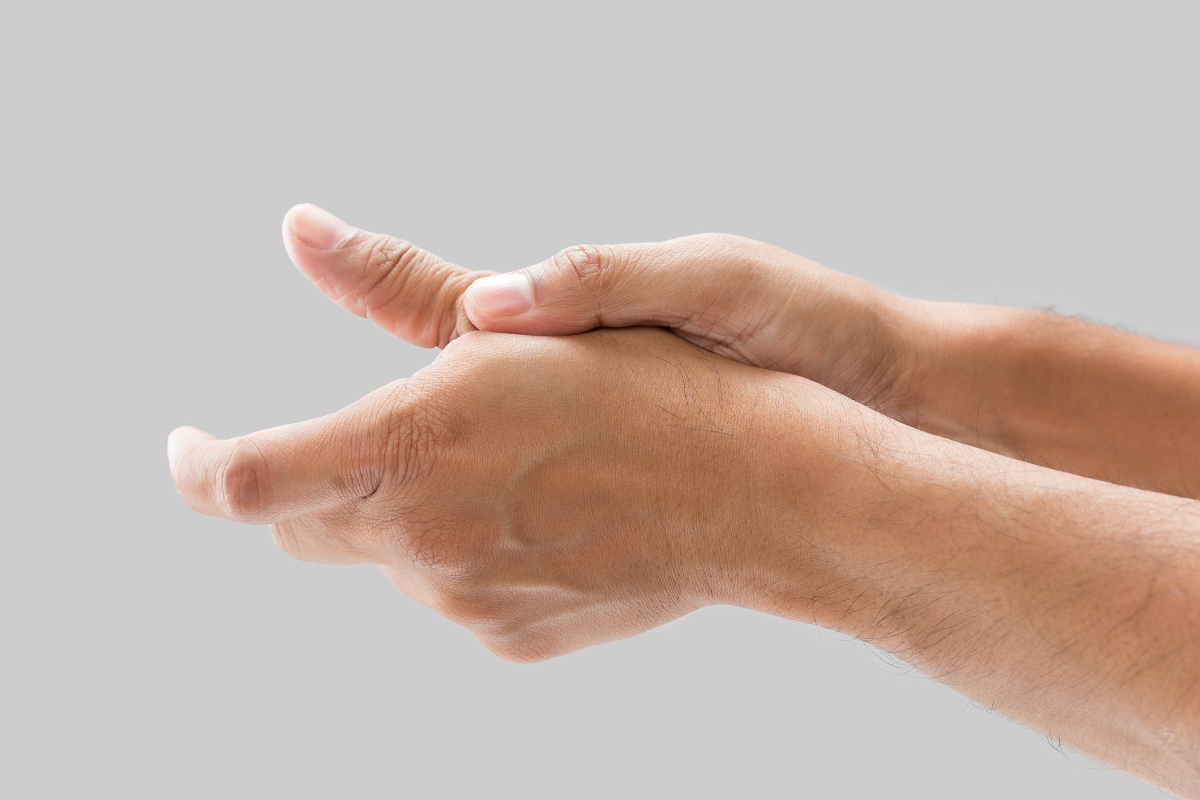
April 14, 2023 at 2:31 pm · drsahai · 0 comments
5 Common Signs of a Thumb Sprain
Thumb sprains are a common injury that can occur due to various reasons, ranging from sports activities to everyday accidents. A thumb sprain refers to the stretching or tearing of the ligaments that support the thumb joint, leading to pain, swelling, and limited mobility. If you suspect a thumb sprain, it’s important to recognize the signs and symptoms to seek appropriate medical attention and prevent further damage. In this article, we will discuss five common signs of a thumb sprain.
- Pain and Tenderness: One of the most common signs of a thumb sprain is pain and tenderness around the base of the thumb. The pain may be sharp or dull and can worsen with thumb movement or pressure on the affected area. The injured thumb may also feel tender to touch, and even mild pressure can cause discomfort.
- Swelling and Bruising: Swelling and bruising are often present with a thumb sprain. The injured thumb may appear swollen, and the swelling may extend to the surrounding areas. Bruising, which is caused by bleeding under the skin due to torn ligaments, may also be visible around the thumb joint and may change colors over time.
- Limited Range of Motion: Thumb sprains can restrict the normal range of motion of the thumb. You may find it difficult to move your thumb in all directions, including grasping objects or pinching motions. The joint may feel stiff, and you may experience discomfort when trying to move it.
- Weakness and Instability: Thumb sprains can weaken the thumb joint and make it feel unstable. You may notice a decreased grip strength or difficulty in performing everyday activities that require thumb function, such as writing or opening jars. The thumb joint may also feel wobbly or loose, and you may have difficulty maintaining a firm grip.
- Painful Snapping or Popping Sensation: In some cases, a thumb sprain may be accompanied by a painful snapping or popping sensation at the base of the thumb. This may occur when moving the thumb or applying pressure to the joint and may be indicative of a more severe sprain or ligament tear.
If you experience any of these signs or symptoms of a thumb sprain, it’s crucial to seek medical attention from a healthcare professional, such as a physician or orthopedic hand specialist, for an accurate diagnosis and appropriate treatment. Treatment for thumb sprains may include rest, ice, compression, and elevation (RICE), splinting or bracing, pain medications, and physical therapy. In severe cases, surgical intervention may be required to repair torn ligaments.
In conclusion, thumb sprains can cause pain, swelling, limited range of motion, weakness, instability, and may be associated with a snapping or popping sensation. If you suspect a thumb sprain, it’s important to consult a healthcare professional for proper evaluation and management. Early diagnosis and treatment can help prevent long-term complications and promote a speedy recovery.
References
- American Academy of Orthopaedic Surgeons. (2018). Sprained Thumb. OrthoInfo. https://orthoinfo.aaos.org/en/diseases–conditions/sprained-thumb/
- Mayo Clinic. (2019). Thumb Sprain. Mayo Clinic. https://www.mayoclinic.org/diseases-conditions/thumb-sprain/symptoms-causes/syc-20378538
- American Society for Surgery of the Hand. (n.d.). Thumb Sprain. ASSH Handcare. https://www.assh.org/handcare/hand-arm-injuries/thumb-sprain
- Hand therapy after thumb sprain. Journal of Hand Therapy, 32(1), 67-70. doi: 10.1016/j.jht.2018.09.003
- Harvard Health Publishing. (2019). Thumb sprain. Harvard Medical School. https://www.health.harvard.edu/a_to_z/thumb-sprain-a-to-z
- American Society of Hand Therapists. (n.d.). Thumb Sprain. American Society of Hand Therapists. https://www.asht.org/sites/default/files/docs/2019/Thumb%20Sprain.pdf
Tags: thumb pain, thumb sprain, thumb sprain signs Categories: Finger
